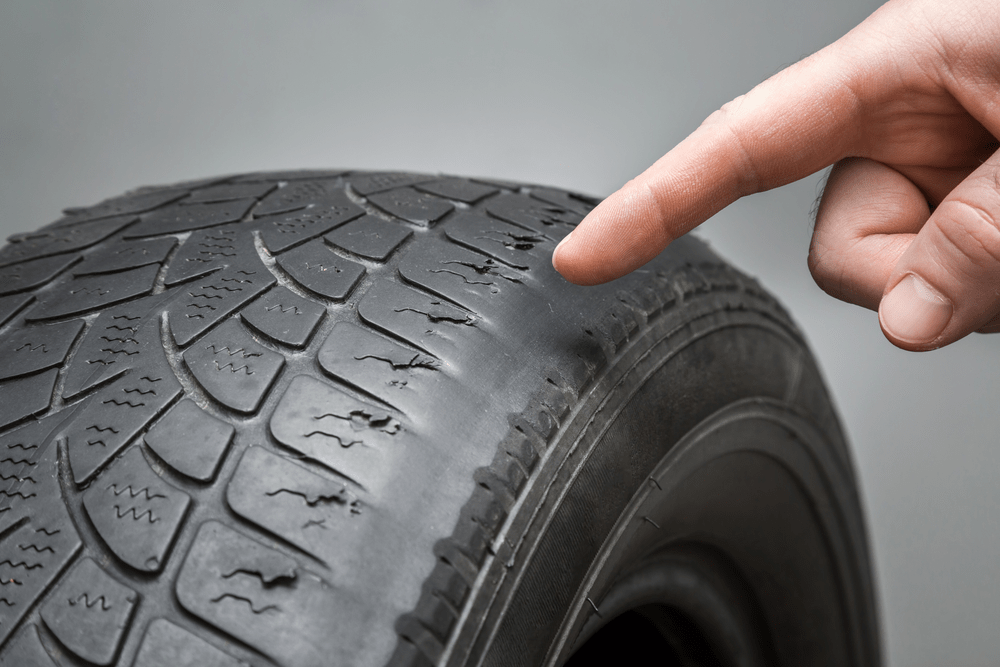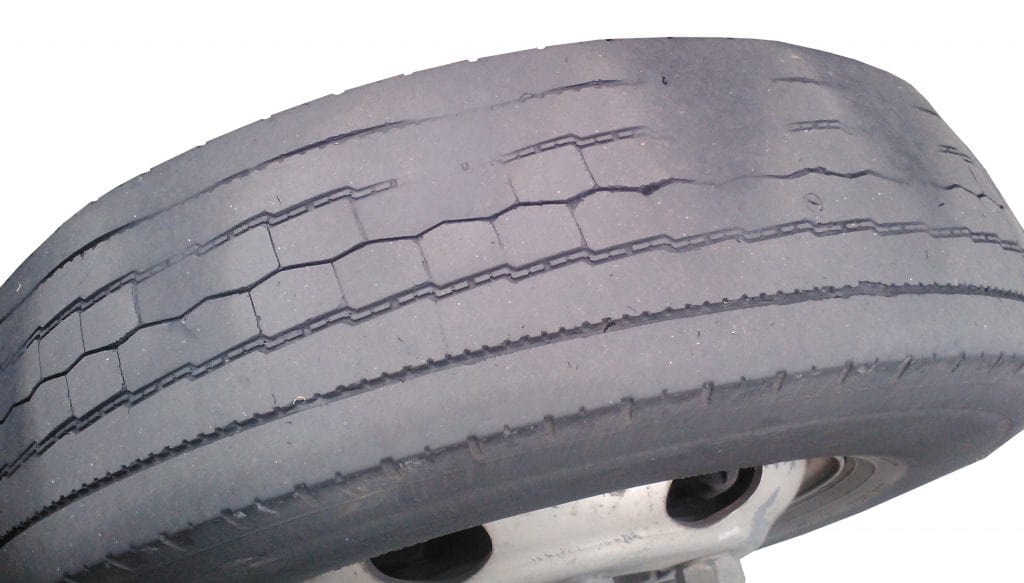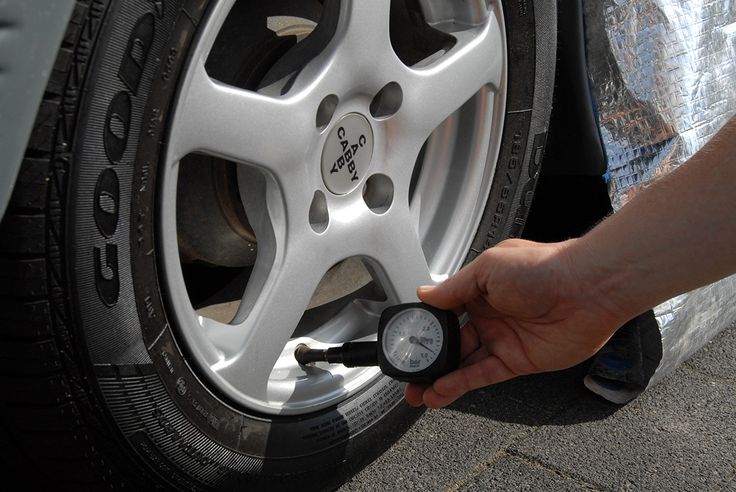What Is Tire Cupping & How Do I Avoid It?

Tires are the only part of a car that comes into contact with the road surface, so they are often the first to signal something is wrong with your car. During operation, car tires are affected by loads, speed, temperature, friction, and centrifugal force, causing many types of surface deformations, and there is a risk of causing unsafety driving and the structure tire.
In the article, we just focus on breaking a problem “Tire cupping“. “Cupped tire” is one of the most common types of tire wear experienced by many drivers. Let’s find the reasons and the solution to avoid cupping on tires.
What Is Tire Cupping?
While the term may be new to you and sound somewhat unusual, you can simply understand it’s one of the surface deformations. You can see this phenomenon with your eye or touch the tire. These are round or scalloped protrusions.
If you notice that wearing in the tires is unevenly distributed three to four inches apart in patches. That is a sign that your tires are about to be cupped. This phenomenon signals that parts of the suspension have been damaged or worn, causing the tire to bounce and down at some points more strongly than others, after a while creating protrusions in the tire.
Although you may see seemingly simple symptoms, it latent serious issues related to the maintenance of the car. After understanding the basic knowledge about What is cupping on tires? In the next part, JDM Export will share with you the cause of this phenomenon.

Common Reasons For Tire Cupping?
Cupping around the tread of tires may be caused by 5 reasons. Let’s find the detailed reasons:
Excessively worn shocks and struts
Cupping is caused by worn-out shocks or struts because the car bounces up and down as it travels down the road creating more pressure on certain points of the tire.
Shock absorbers are designed to keep the wheels on the road and if you have wheels that are jumping off continuously, it will cause the tire to cup. In this case, you will feel the tire is wavy if you rub your hand across the tire.
The important shocks and struts will keep the tire from bouncing like a basketball. So we recommend that: Pay attention to the shocks to save your tires.
A worn-out suspension and joints
Issues with the suspension can cause your wheels to become misaligned, itself a cause of uneven wear in the cupping direction. If a wheel leans too much to either side in normal running, it puts an increased load on one side of the tire which can result in scalloped tires.
This may be due to weakened springs, worn ball joints, or issues with other parts of the suspension system. The faulty suspension will tear the tire, as well as wear out the tire in specific spots much faster than in others.
As a result, the car loses contact with the road when moving and creates “cups” that look like craters and sink deep into the rubber.
The suspension system wear of cylinder joints, deformation of stitches, or deviation of structural parameters… will cause the wheels to lose the correct kinematics.
From there, the car loses its ability to operate stably, often bouncing around, causing great pressure on the tires, and causing the tires to cup.
Faulty braking system.
If you have worn out brake pads you can cause damage to your car’s rotor. This can cause the wheel to run hotter causing unevenly worn tires.
Sometimes brakes can rush over time which can cause grabbing and be harder to stop. This will increase the road friction which damages the tires faster.
Improper tire inflation.

Cupping on tires is a sign of improperly inflated tire pressure. Following the manufacturer’s instructions about stabilizing tire pressure not only ensures good performance but also helps to slow down tire wear.
If the tire is inflated with too high pressure, it causes the tire to inflate, the middle part is worn out faster, reducing the contact surface, and the level of friction with the road surface, causing low braking efficiency. Besides, over-inflated tires also cause the car to bounce when moving on the road.
On the contrary, too low pressure causes the tire to deflate. At that time, the walls on both sides are quickly worn down due to more pressure than the middle part, increasing the contact surface, friction, and consuming fuel.
Note that tire wear on the sidewalls of the tires can also be caused by frequent overloading of the vehicle even though the pressure is in line with the manufacturer’s recommendations.
Thus, tire pressure that is too low or too high is also the cause of cupped tires, reducing the lifespan and affecting the operation of the tires. Check your tire pressure regularly to make sure all your tires inflated at the right level. You can also equip a tire pressure monitoring system to always have being informed about tire pressure information.
Imbalance wheel
Unbalanced wheel placement is one of the reasons leading to tire wear cupping. In the process of replacing wheels, unbalanced wheels will cause the vehicle to shake when driving, causing uneven tire wear due to contact with the road surface.
Excessive wheel imbalance creates hopping at highway speeds over time. This hopping may lead to cupping wear. When the rim is out of balance, the center of the wheel does not fall on the middle axle, so the tire is worn in pieces like a cup.
Wheels are installed with suspension and steering systems and many other components to ensure a stable and smooth ride. Improper tire alignment can cause tire cupping.
Drivers should adjust the tire angles and assess their contact with the road to match the parameters recommended by the manufacturer. There Are 3 factors you should note when aligning the tire: Camber, Caster, and Toe.
How To Avoid Tire Cupping?
Tire cupping will affect the car’s ability to react to the road surface, control, and especially braking will not be effective. Before looking for a solution to fix this phenomenon, we will share with you the signs of the cupped tires?
These signs will tell you whether you should change the tires to make sure safe for drivers and other vehicles.
The signs tell you when your car is cupping.
Vibration
Pay attention to the noise coming from the car: shaking or wobbling when you are driving. this sign is straight to the fact that your car tire is cupping. You can easily feel it when driving on a road with many obstacles such as medians, traffic jams, and potholes.
This point is very much related to the problems we analyzed above. This happens on unevenly worn surfaces. And it creates different contact points for the tire to ride on the road you’re driving on. This creates vibrations in the wheels and you will feel your car wobble.
Vibration can be a symptom of damage to one of the components of the tires. And also indicates that one of your wheels is misaligned or bent, which will cause prone to tire wear. It can also be related to a suspension system.
Steering wheel shaking
When driving, steering wheel vibration is inevitable, especially when traveling on uneven roads. However, after a while of driving, you will train your conditioned reflexes and be enough to perceive vibrations as abnormal.
There are many causes for the car’s steering wheel to vibrate a lot, but if the tires are cupping, the driver can feel the vibration in the steering wheel while driving. At this point, you need to take the car to check and balance the tires.
>> Related post: Why A Car Shakes When Accelerating? – Discover The Causes
Tilting to one side
Many times, cupping on the tires can make a vehicle feel like it is drastically tilting. While adjusting the vehicle, if you need to exert more effort than usual for accuracy, this means that your vehicle is tilting.
Another way to check is to let the vehicle slow down without braking. If it’s slowing down but also leaning to the side of the road, that means your car is out of balance.
Visual signs
You can easily spot this problem by touching or taking a look at the tire tread. And if there are patches of uneven wear, replace them.
5 ways to prevent tire wear cupping?
Cupping tires can cost you more to replace and are more dangerous than affect safety when traveling. Here are a few tips to help you limit this phenomenon. It not only helps to increase the life of the tire but also ensures the vehicle’s stable operation. Specifically:

Check and make sure the air pressure
Tire pressure is indicated on the tires or can be found in the manual. Checking and ensuring the correct tire pressure will help the vehicle load evenly at all points on the wheel and limit uneven tire wear or tire cupping. Or equipment with a tire pressure sensor is also an ideal suggestion for drivers to quickly detect uncertainties in tire pressure and handle it promptly.
Check your tires regularly
Checking your tires regularly with visuals is a simple way to recognize the early signs of cupped tires. In addition, notice abnormalities or problems with the vehicle through noises, difficulty in controlling the vehicle, etc. To see if there is a danger of malfunction, quickly have the vehicle checked timely.
Wheel alignment
Wheel alignment is very important and directly affects the car’s ability to grip the road, lifespan, and safety when driving. So this is a job that needs to be done periodically.
Besides, annual suspension and alignment checks will reduce the chance of a flat tire by ensuring the tire rolls the way the car manufacturer intended and stays in contact with the road surface.
Rotating tires
Tires often wear out to many different points and levels after a period of use. Therefore, in order for the tire to wear evenly, it is necessary to rotate the tire.
However, when rotating the tire, it is necessary to pay attention to the design of the tire. Because some tires are designed to rotate in the same direction. If your tires are directional, you should only rotate them from front to back (or vice versa) on the same side of the vehicle.
>> Read more: The Super Easy Way To Clean Inside Of Windshield
Avoid bad habits when driving.
You shouldn’t drive too fast on the uneven road. When driving through potholes. It can cause a tire to flat or crack a wheel or damage the belt and wall of a car tire. Collisions, when cars enter potholes or drive fast in places on the bad road surfaces can cause wheels to shift or lead to damage to the suspension, and steering system.
The Bottom Line
Hopefully, the article will help you understand the causes of tire cupping. And have more useful experiences to limit this situation. Tires are one of the most important and indispensable parts of a car. So to ensure safety for each journey.
You need to know the common signs of damage in car tires. So that you can take timely measures before going far. And when detecting any of the signs above. The drivers should take the car to a reputable service shop to be checked with professional tools.





